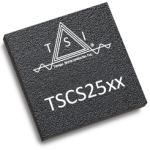AnalogSteph
Major Contributor
A 32-bit DAC does actually make sense in a digital signal generator. If you do a linearity test running straight undithered 24 bit data into a DAC with a sufficiently narrow filter bandwidth, you will see a telltale ca. -0.6 dB deviation at -120 dBFS that is indicative of 24-bit truncation.

 www.audiosciencereview.com
And so all modern DACs (since about 2013 at the latest) are 32 bit, shifting the problem down by about another 48 dB.
www.audiosciencereview.com
And so all modern DACs (since about 2013 at the latest) are 32 bit, shifting the problem down by about another 48 dB.
That being said, nobody actually needs more than 24 bits in an audio ADC chip. You can combine all 8 channels in the best ones we've got and you'll still barely make it to 130 dB(A), more than 2 bits worth of good ol' analog noise that'll dither a 24-bit ADC just fine.

Topping E30 II Lite DAC review and measurements
Here is a review and measurements of the recent Topping E30 II Lite DAC Here you see it on top of the gorgeous Topping A70 Pro, to give an idea of its size. Yes, it's a very small DAC. I purchased it new from Audiophonics for around 100€. This is one of the cheapest DACs with SPDIF inputs...
 www.audiosciencereview.com
www.audiosciencereview.com
That being said, nobody actually needs more than 24 bits in an audio ADC chip. You can combine all 8 channels in the best ones we've got and you'll still barely make it to 130 dB(A), more than 2 bits worth of good ol' analog noise that'll dither a 24-bit ADC just fine.
Last edited:



